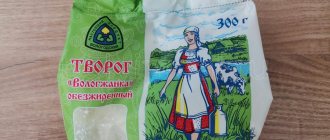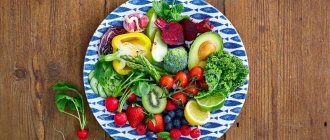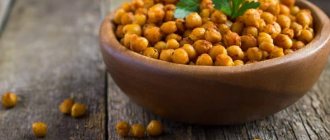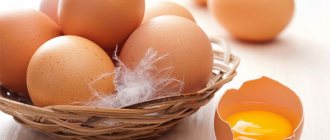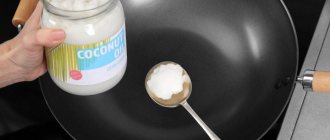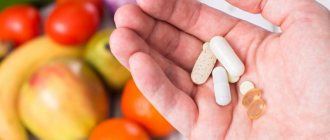Cottage cheese is very healthy, it contains vitamins, minerals, beneficial bacteria, etc.
It is recommended to be included in the menu for adults, children, the elderly and sick people.
The question of whether it is possible to eat cottage cheese on a diet while losing weight is quite relevant.
According to nutrition experts, it is even recommended to include the product in the menu; the main thing is to know how to choose it correctly, when to eat it and what to combine it with.
What the experts say
According to nutritionists, cottage cheese is a valuable product that can itself become the basis for a diet. There are various methods for losing weight using fermented milk products. With regular consumption, the functions of the gastrointestinal tract are normalized, the condition of the skin, hair, and nails improves, thanks to the high calcium content.
Expert opinion
Evgeniy Kislitsa
Practicing surgeon. Certified massage master. Two-time vice-champion and heavyweight champion of regional kettlebell lifting competitions.
Cottage cheese is especially useful for those people who have problems with the growth of bone and cartilage tissue, persons under 24-25 years of age (due to the still active growth of bone tissue), athletes involved in heavy and contact sports (stimulates the growth of bone and cartilage tissue, allows you to accelerate the processes of restoration of these tissues after physical exertion and/or injury). It is strongly recommended to eat cottage cheese during recovery from bone fractures or damage to the joint apparatus (especially cartilage). Because due to the high calcium content and the presence of vitamin D in the product, the restoration of damaged tissues is accelerated. Mature and elderly people, regardless of the severity of physical activity, are recommended to regularly eat cottage cheese. After all, it not only allows bone tissue to recover faster, but also prevents the leaching of calcium from the bones, which is necessary for the formation and maintenance of the strength of bone beams (they form the structure of the bone). The indication is justified by the physiological characteristics of the body at this age, when all people experience a decrease in the calcium content in the bones, causing them to become fragile, easily injured and broken. At the same time, at this age, the ability of bones to recover decreases, and the activity of their resorption (splitting) processes increases. Calcium prevents bone resorption processes at any age.
Some people who are losing weight don’t know how to eat it correctly to lose weight. To ensure that the product brings only benefits, experts advise following the following rules:
- Use only fresh product. Old cottage cheese not only loses its beneficial properties, but can also cause food poisoning or the development of an infectious disease, since microorganisms actively multiply in it.
- Give preference to cottage cheese with a fat content of 1.8 to 5%.
- It is not recommended to combine lactic acid products with sugar. It is better to use sour cream, yogurt (low fat), honey, or any plant products.
- Eat milk concentrate 1-2 times a day.
- Before consumption, make sure you are not allergic to lactose.
- It is better to eat cottage cheese in the first half of the day.
If a person adheres to these recommendations, he will be able to normalize his weight and improve his health.
Important! To absorb calcium from dairy products, vitamin D is necessary. In the body, it is produced in sufficient quantities under the influence of ultraviolet radiation. The natural source of ultraviolet radiation is sunlight. Therefore, in order for the microelement to be maximally absorbed by tissues, it is necessary to regularly go outside and take walks in the fresh air. Complexes will be an alternative source of vitamin D, but the availability of this substance is lower in them. Therefore, the best option is to be outside.
Anna Moroz, trainer
According to a highly qualified trainer in fitness and bodybuilding, cottage cheese is not suitable for dinner if a person wants to lose weight. This is due to the fact that during sleep the body recovers, this process is accompanied by the production of somatropin (growth hormone). This substance promotes the breakdown of fat. Milk concentrate contains casein, which provokes an increase in insulin in the blood; this hormone inhibits the action of somatropin, as a result, fats burn more slowly. In addition, due to a decrease in the synthesis of somatotropin, the activity of restoration processes in tissues, especially muscles, decreases, and this leads to the fact that muscle growth proceeds more slowly and in smaller volumes than is possible with the recommended time consumption of cottage cheese. Therefore, it is better to eat this product during the day.
Yulia Bastrygina, nutritionist
According to a leading nutritionist, it is important to choose the right fermented milk product. Therefore, before purchasing, study the composition; it is recommended to buy a natural product. During the diet, it is better to avoid sweet curd products. The nutritionist advises purchasing cottage cheese with a fat content of 2 to 4%; it contains more nutrients and will not spoil your figure. High-quality milk concentrate cannot be cheap, so do not be tempted by tempting promotions, rather think about your goal. The optimal portion of cottage cheese for those losing weight is 200 g per day.
Selezneva Ksenia, nutritionist
A well-known nutritionist and gastroenterologist advises avoiding low-fat cottage cheese when losing weight. It has worse taste, it contains chemical additives (flavors, stabilizers, sweeteners), and sometimes trans fats. After eating it, a person feels even more hungry, since cottage cheese with zero fat content is saturated with carbohydrates, which are quickly absorbed, forcing the person to eat it again. And the salts in milk concentrate retain excess fluid, straining the heart and kidneys. Give preference to semi-fat cottage cheese (1.8-5%). It is more natural and contains beneficial substances. And in order not to gain weight by consuming it, just control the portion - no more than 200 g per day.
Be sure to check out:
Is it possible to eat corn while on a diet: benefits and harms? Get a complete set of proteins, fats and carbohydrates from Doshirak dietary products on a diet: is it possible to eat fast food products? Is it possible to eat soy sauce while on a diet: all the myths and truth
How to choose the right cottage cheese
- Pay attention to the date of manufacture; the product should not be expired, since its fermented milk environment is ideal for the development of intestinal infections.
- Study the composition. The following components are allowed in high-quality cottage cheese: skim milk and sourdough. Starch and other components reduce not only the cost, but the quality.
- The color of the cottage cheese should be white. Since there is no fat in it, there can be no yellowness either.
- It is advisable to give preference to cottage cheese that is made according to GOST standards.
Low-fat cottage cheese is a dietary product that cannot make you gain weight. It is rich in protein and other healthy components. Cottage cheese is recommended for people of all ages. However, it is necessary to follow the daily consumption norms so as not to harm the body.
Benefits, harm, composition, energy value, contraindications
To understand how useful a lactic acid product is, you need to study its composition:
- Proteins, fats, carbohydrates (BJU).
- Retinol.
- Thiamine, riboflavin, vitamin B9.
- Vitamin C.
- A nicotinic acid.
- Iron.
- Calcium.
- Potassium.
- Magnesium.
- Unsaturated fats.
- Organic acids.
- Water.
- Saccharides, etc.
There are 4 types of milk concentrate: low-fat, semi-fat, full-fat, granular.
The energy value of each type is different:
- Low-fat cottage cheese (up to 1.8%) contains from 90 to 105 kcal per 100 g.
- Bold (from 1.8 to 9%) – from 135 to 160 kcal/100g.
- Fat (from 9 to 22%) – 230 kcal/100g.
- Grainy – 150 kcal/100g.
Beginners losing weight are interested in the question of which cottage cheese is better. If you want to get rid of extra pounds and improve your health, then choose a product with a fat content of 1.8 to 5%. It is healthier (calcium, vitamins, and minerals are absorbed faster), tasty, and will not cause fat accumulation (with moderate consumption). Cottage cheese with a fat content of 9% is also allowed for weight loss, the main thing is not to eat more than 150 g per day.
The fat content of milk concentrate affects its composition, for example, half-fat cottage cheese contains 16 g of proteins, 9 g of fat, 3 g of carbohydrates.
Fermented milk product has the following beneficial properties:
- Quickly absorbed.
- Accelerates metabolism and fat burning.
- Accelerates the processes of restoration of cells of the gastrointestinal tract.
- Stabilizes blood glucose levels.
- Being a source of protein, it allows you to maintain the balance of extra- and intracellular fluid, thereby preventing the development of many dangerous diseases, including the cardiovascular and urinary systems.
- Strengthens bones.
- Positively affects the functions of the cardiovascular and nervous systems.
- Strengthens the immune system.
- Maintains hemoglobin levels. Accelerates the formation of red blood cells (erythrocytes).
- Improves vision.
The grain and semi-fat product helps to lose weight and is suitable for feeding children, pregnant women, nursing women, the elderly, and sick people. And full-fat milk concentrate is suitable for building muscle mass. However, due to the high content of carbohydrates and fats in it, such a product must be consumed strictly within the portions determined for a specific weight, height and physical activity, otherwise you can gain not only muscle, but also excess fat tissue.
Despite the benefits of cottage cheese, it can be harmful:
- There is a risk of allergy if you are hypersensitive to lactose.
- With regular consumption of fatty foods (from 9%), the level of cholesterol increases and the likelihood of obesity or atherosclerosis increases. The latter leads to the formation of atherosclerotic plaques and the development of oxygen starvation in the tissues.
- Cottage cheese aggravates the patient’s condition with pathologies of the kidneys, gall bladder, and urolithiasis.
- Grainy and low-fat cottage cheese should not be eaten if there are gastrointestinal disorders.
- An expired product provokes intoxication. If the milk is poorly processed, the milk concentrate may be contaminated with pathogenic microbes (Escherichia coli).
Important! Only with proper and moderate consumption will cottage cheese bring benefits and speed up weight loss.
Expert opinion
Evgeniy Kislitsa
Practicing surgeon. Certified massage master. Two-time vice-champion and heavyweight champion of regional kettlebell lifting competitions.
Excessive consumption of fatty cottage cheese leads to the formation of atherosclerotic plaques on the walls of arterial vessels that carry oxygen-rich blood to the tissues. As a result, they do not receive the amount of oxygen necessary for correct functioning, and their “work” is disrupted. The condition can be chronic or acute. In the first case, the body adapts to the state of tissue hypoxia (lack of oxygen in them). And in order to compensate for oxygen transport, new vessels begin to form, supplying oxygen to the tissues. The acute condition is much more dangerous and can be life-threatening. In this case, the body’s tissues are not able to quickly adapt to working in hypoxic conditions and begin to die. A striking example is myocardial infarction. Also, atherosclerotic plaques lead to the formation of blood clots on the walls of blood vessels. In addition to the fact that a clot disrupts blood flow in the vessels, it can also break off and be transported through the bloodstream. When a blood clot reaches a vessel through which it cannot pass, it becomes blocked and acute tissue hypoxia develops, which leads to tissue death.
What harm can there be
Cottage cheese is one of those few products that cause virtually no harm to the body. Still, some points should be voiced.
First of all, human health may suffer if stale cottage cheese is eaten. As you know, fermented milk environment is ideal for the development and reproduction of various infections. If the cottage cheese has been stored for a long time or incorrectly, then harmful bacteria such as E. coli and even salmonella can be found in it. After consuming the product, colic, bloating, belching, nausea, vomiting, diarrhea, etc. will appear. Therefore, when choosing cottage cheese, you should definitely pay attention to the expiration dates, especially if the product is taken for a child.
If cottage cheese is stored incorrectly, harmful bacteria appear in the product.
The second danger that low-fat cottage cheese carries is its excessive consumption. Many people striving for an ideal figure begin to consume the product uncontrollably, citing the fact that it contains few calories. However, cottage cheese contains a lot of protein, which breaks down into amino acids during the breakdown process. The latter break down into ammonia, water and carbon dioxide. Ammonia is a toxic substance that is neutralized by the liver and excreted from the body by the kidneys. With a large intake of protein, the load on the kidneys increases greatly, which can cause disturbances in their activity. This situation is especially dangerous during pregnancy, when the kidneys work “for two.”
Contraindications to consuming low-fat cottage cheese are:
- individual intolerance;
- hypolactasia (the body’s inability to break down lactose - milk sugar);
- diseases associated with impaired calcium metabolism in the body.
Low-fat product: myth and reality
The fat content of a low-fat product differs:
- Low-fat (0%): BZHU – 71 kcal/100g, proteins – 16.5 g, fats – 0 g, carbohydrates – 1.3 g.
- Low-fat (0.1%): BJU: B – 11.9 g, F – 0.1 g, U – 3.61 g, calorie content – 76 kcal.
- Nutritional value of low-fat cottage cheese (1%) – 80 kcal, B – 16.5 g, F – 1.1 g, U – 1.8 g.
- The energy value of a product with a fat content of 1.8% is 101 kcal, B - 18 g, F - 1.8 g, U - 3.3 g.
Quite popular for weight loss is cottage cheese, the fat content of which is 2%, it contains 103 kcal/100g, 18 g of proteins, 2 g of fat, 3.3 g of fat.
There are many myths about low-fat fermented milk products:
- Cottage cheese with 0% fat content does not contain lipids. All products (except green tea) contain a small amount of fat. Fats are necessary for the formation of a number of biologically active substances, the formation of cells and their functioning. Therefore, their deficiency causes much more harm to the body than excess.
- A low-fat product only brings benefits. Fats are useful for the normal functioning of the body; in their absence, the condition of the hair and skin deteriorates, and the functionality of the reproductive system of women is disrupted. Low-fat cottage cheese may contain chemical additives as well as artificial trans fats. With frequent use, metabolism is disrupted, immunity is weakened, and there is a risk of diabetes.
- Low-fat fermented milk product gives a feeling of fullness. In fact, after consuming it, a person feels hungry within a few minutes.
- A low-fat product contains protein. Its amount in this product is significantly less than in regular cottage cheese.
Low-fat cottage cheese is recommended for use for hypertension, as well as for people with high cholesterol concentrations to prevent atherosclerosis. Healthy people can afford milk concentrate with a fat content of 1.8-5%.
Attention! Trans fats are carcinogens – substances that provoke the development of malignant tumors. Therefore, it is strongly recommended to avoid consuming trans fats.
Recommendations for use
Read the label carefully . The presence of additives can be detected by the stated shelf life; in the absence of preservatives, it does not exceed 2-3 days.
A product with a “weekly” shelf life obviously contains preservatives, even if they are not listed on the label.
But even preservatives do not guarantee the absence of mold fungi or E. coli during long-term storage, so use only fresh product .
For weight loss
Low-fat cottage cheese is extremely popular among those losing weight due to the presence of protein, low carbohydrate and fat content, but getting carried away with it based on these properties is harmful .
Healthy weight loss involves a small calorie deficit, about 400-500 kcal, which will allow you to lose 21 kg per year without any special restrictions.
, normal fat content is still and the presence of fat-soluble vitamins.
In cooking
Cottage cheese dishes are very popular in cooking. You can make cottage cheese pancakes .
Rub 250 g of cottage cheese through a fine sieve, add 1 egg, 1 tbsp. l. flour (or semolina), sugar and sour cream, salt to taste.
Place the mixture in molds and bake for 20 minutes in the oven at 180°C.
Very easy to prepare cupcake . Grind 150 g of butter with 300 g of sugar, add alternately with thorough mixing 3 eggs, 250 g of 9% cottage cheese, 1 tsp. l. baking soda and 300 g flour.
Place in a greased pan and bake in the oven for 1 hour at 180°C.
2 fitness recipes with cottage cheese - casserole and spread:
In folk medicine
In folk medicine, curd compress is widely used as an external remedy.
The tumor after a bruise disappears within two days if a compress from a mixture of 2 tbsp is applied to the bruise site. l. cottage cheese with 1 tbsp. l. honey
The burn will go away without consequences if you apply a warmed cottage cheese “cake” to the burned area , changing it every few hours.
Curd
When dieting, it is not recommended to consume curd mass. Firstly, it contains more calories, and secondly, numerous chemical additives are used during its preparation, and poor-quality raw materials may be used, which significantly increases the risk of food poisoning or the development of an infectious disease.
High-quality cottage cheese is created on the basis of cottage cheese, butter, sugar, and dry fruits. The label indicates the composition, calorie content, and manufacturer's address. It is usually stored for about 3 days.
It contains beneficial bacteria, nutrients, vitamins, minerals, and organic acids. Its only drawback is its high calorie content.
Attention! If the shelf life of the curd mass is from 5 to 7 days, then you have a low-quality product that can cause poisoning, allergies and other disorders.
Shelf life
The shelf life indicator directly depends on the packaging. Considering the weighed version that is sold on the market, we can say that it can be stored for no more than 36 hours. If the product is offered in foil or paper packaging, it can be stored at the appropriate temperature for no more than 7 days. Vacuum packaging makes it possible to preserve the product for 30 days. The recommended temperature for storing curd product is 2-6 degrees. Curd products can be stored in the freezer for 3 weeks, but their taste will be somewhat spoiled. The more contact the curd product has with the environment, the faster it will oxidize.
How to use, should you eat at night and with what?
Doctors recommend eating cottage cheese in the morning and afternoon, as it takes a long time to break down (about 3 hours). However, many people feel hungry in the late afternoon. Then the question arises whether the product can be eaten in the evening. For dinner you are allowed to consume 2-3 tbsp. spoons of protein concentrate.
Not everyone who is losing weight knows whether they can take milk concentrate at night. A person can eat a small portion of the product 3-4 hours before going to bed. Otherwise, it will be difficult for him to fall asleep due to the feeling of heaviness. If you consume cottage cheese after the specified time, most of the carbohydrates from the product will turn into fat deposits.
Those losing weight are interested in the question of what to eat cottage cheese with. During the day it can be combined with honey, fresh and dry fruits, berries, vegetables, and herbs.
The question of what to eat milk concentrate with in the evening is quite relevant. A salad of cucumbers, tomatoes, paprika, cottage cheese, kefir, herbs and garlic will relieve hunger for a long time. At night, you can mix milk concentrate with honey, raisins, dried apricots, or make a curd and berry smoothie. The main thing is to eat 3 hours before bedtime and in a minimal portion.
You can eat low-fat cottage cheese at night, especially if you have already consumed a portion of a low-fat product during the day.
The harm of low-fat cottage cheese - hidden dangers
Talking about the dangers of cottage cheese is blasphemy, unless we are talking about a low-quality product. Surely, you have come across non-grain cottage cheese, which contains special lactobacilli. By the way, there shouldn’t be any, because cottage cheese is made from milk and does not need any additional ingredients. Externally similar bacteria can remain in the product for only 2 hours, and from the moment the bag or packaging is opened, they multiply. Excessive numbers of bacteria will cause stomach upset.
Why can't you eat low-fat cottage cheese?
Why you can’t, or who it’s better not to eat low-fat cottage cheese, is children. Athletes and bodybuilders can eat any fatty or low-fat dairy products, but children need a balanced diet. The best type is considered:
- In the morning protein + carbohydrates.
- During the day fats + protein.
- Carbohydrate in the evening.
If you choose curd products as protein and carbohydrate analogues, this is what normal nutrition will look like:
- In the morning, eat 100 g of cottage cheese 5%.
- During the day, you can mix 7% fat cottage cheese with fruit or honey. This is a loading dose to stop hunger attacks. It is useful and necessary for children.
- In the evening, eat 3% cottage cheese.
In this way, the child's muscles will constantly benefit, and it is not necessary to always look for fat-rich foods. The main thing is that the salt and fats are natural, then the children will receive a natural increase in supplementary feeding. But women are advised to eat full-fat cottage cheese at night, and in the morning eat medium-fat milk. During the day, eliminate it altogether and add proteins and light carbohydrates to your diet.
Diet dishes
You can prepare many delicious and low-calorie dishes from cottage cheese:
- Sandwiches:
- chop the greens;
- mix cottage cheese with sour cream (low fat);
- peel and crush a few cloves of garlic;
- add herbs and garlic to the curd mixture;
- Spread the mixture onto the diet bread and place a piece of tomato, cucumber or paprika on top.
- Curd and vegetable salad with avocado:
- pick Chinese cabbage with your hands;
- chop avocado, tomatoes;
- mix grainy cottage cheese with vegetables, spices, olive oil.
- Fruit salad with cottage cheese:
- cut peach, banana, kiwi;
- add cottage cheese, unsweetened yogurt to the fruit, stir.
- Casserole:
- mix chopped herbs with garlic, salt, pepper;
- add cottage cheese there, stir;
- grind hard cheese (low fat), add to the base;
- beat the whites until thick foam is obtained, mix with the remaining ingredients;
- Pour the mixture into a baking tray and bake until golden brown.
Cottage cheese goes well with many foods, the main thing is to choose low-calorie ingredients.
Important! Since cottage cheese is a protein product, its abuse leads to disruption of the kidney filtration apparatus even in healthy people. Those who have kidney pathologies can consume cottage cheese only if they strictly adhere to the portions recommended by the doctor.
You may also be interested in: How to properly consume chia seeds for weight loss
Dairy products for weight loss
Useful properties of cottage cheese
Lactic acid bacteria in the curd mass normalize intestinal motility, which helps improve the functioning of the gastrointestinal tract. Cottage cheese in the diet reduces the risk of coronary heart disease, lowers cholesterol levels and strengthens blood vessels. Its systematic use increases hemoglobin and improves the functioning of the nervous system.
However, with the modern abundance of fermented milk products, there is a possibility of buying not the best product, but its counterfeit. Many manufacturers use vegetable fat instead of milk fat. Roskontrol regularly examines samples from different manufacturers. The presence of vegetable fat starch in the samples is checked and the product’s compliance with GOST is checked.
In addition, there is a Russian Quality System Standard. It sets increased requirements for the quality and safety of products compared to the current state standard. It excludes the presence of preservatives, stabilizers, antibiotics and their traces. Experts say that starch reduces the nutritional value of cottage cheese by reducing the amount of protein. In addition, complex carbohydrates have a negative effect on blood sugar, which is a contraindication for people with diabetes.
Main conclusions
As you can see, cottage cheese can be consumed when losing weight, the main thing is to follow the following rules:
- Choose a fresh, natural product.
- Give preference to semi-fat lactic acid concentrate from 1.8 to 5%, it will bring more benefits than low-fat.
- Eat cottage cheese 1 or 2 times a day, no more than 200 g.
- Eat cottage cheese and dishes made from it in the first half of the day.
- In the evening, consume the lactic acid product 3-4 hours before bedtime.
- Combine milk concentrate with honey, dry and raw fruits, vegetables, and herbs.
When consumed correctly, cottage cheese satisfies hunger, saturates the body with useful substances, accelerates metabolism and fat burning. If you have kidney disease, it is recommended to consult your doctor or urologist or nephrologist regarding the rationality of consuming cottage cheese.
Low-fat cottage cheese: calorie content, BJU, glycemic index and nutritional value
Low-fat cottage cheese, which has a fat percentage of up to 1.8%, has a calorie content of 0.2%. Fat content does not indicate calorie ratio, so the total caloric composition may be higher due to other acids and components of the product.
- Fats – amount to half a gram.
- Carbohydrates – 2.75 grams.
- But there is the most protein - almost 17 grams.
In terms of percentage content, protein accounts for 25%, while carbohydrates account for 1%. In this case, there cannot be zero fat content, and if it is 0%, the calorie content will be expressed as 4%, no less.
In this case, the calorie content reaches 85 kcal, when simple fatty or semi-fat cottage cheese has 112 kcal. They produce energy and strength to support the life of the body. The glycemic index (GI) of cottage cheese is 30 units, but the insulin index is almost 100 units. Also, cottage cheese made from whole milk can have a calorie content of up to 101 grams, exceeding all GOST standards, but in terms of the percentage of the component, it contains less harmful fats, since they are all obtained from an animal composition.
Therefore, based on all of the above, cottage cheese is considered not only useful, but also a necessary product. It contains vitamins H, B3, B12, which help synthesize proteins and fats, activate beneficial components, and normalize the functioning of the gastrointestinal tract and digestive organs in general. By neglecting a healthy diet, you risk saving yourself from the violent need for fat cells, which are necessary for proper brain function. It is important for intellectual professions to receive more carbohydrates, but for athletes - proteins. Moreover, in both cases, a fatty composition is needed that will transport all the components into the cells of the organs.
Losing weight with cottage cheese pancakes
Cottage cheese pancakes themselves, calorie content 1 pc. which is approximately 90 kcal (50 g, classic recipe), cannot be called a dietary product. But there are nutrition systems in which the dish is included as a product that helps successfully lose weight. This includes a hypocaloric diet, where it is recommended to eat several cheesecakes at breakfast. At the same time, you can reduce the calorie content of the dish by adding fresh fruit (instead of the usual sour cream).
What is a hypocaloric diet? This is what doctors now call the familiar term “Table No. 8”. This nutritional system is not just restrictive, but balanced in terms of the amount of fats, proteins, and carbohydrates for a person who does not burden himself with sports.
The list of foods allowed on a hypocaloric diet includes fruits, vegetables, cereals, low-fat protein sources, and vegetable oil. What is the minimum daily calorie intake? WHO recognizes the mark of 1200 kcal for the female body and 1500 for the male body. It must be taken into account that this refers to office employees who are obese.
There is also a version of the cottage cheese treat that, if consumed, will make weight loss impossible. Burger King cheesecakes of which is 392 kcal per serving.
Is it possible
People who want to lose excess weight will be interested to know the rules for taking this dairy product, and whether it is possible to eat it at night.
Get better from low-fat cottage cheese
The low-fat option is simply necessary when losing weight, so it is often found in many diets. This product helps speed up metabolism and supplies the body with many microelements necessary for people who limit their diet. However, it has an average calorie content and should be rationed.
Important! Nutritionists recommend following the norm for weight loss - no more than 300 g per day.
Eat for the night
Low-fat milk product, containing easily digestible protein necessary for the body, is well suited for eating before bed. When losing weight, it is recommended to eat no more than 100 g at night - this will help get rid of hunger and ensure normal sleep.
For taste and health, you can add fruits (apples, pears, cherries, etc.), dried fruits (raisins, dried apricots, prunes), chopped herbs (dill, parsley), garlic.
Of course, low-fat cottage cheese is a source of many vitamins and minerals and at the same time contains fewer calories than other types of cottage cheese; it is readily used in the diet menu.
It has very low levels of cholesterol, which makes it very useful for people with high levels of this substance in the blood. However, some people have an individual intolerance to this dairy product, and it is also not recommended for some chronic diseases.
Find out the benefits of dairy products: milk, milk powder, baked milk, ayran, kumis, kefir, yogurt, fermented baked milk, whey, yogurt, sour cream, butter, goat cheese, feta cheese, Adyghe cheese.
It is necessary to monitor its composition and control expiration dates, since only a natural, fresh product brings benefits.
Making cottage cheese at home
Many lovers of healthy eating can make their own curd mass, having whole milk on hand. At home, this process differs from the factory one, but the resulting delicacy has a less sour taste and is more dietary. It is recommended for use by patients with stomach ulcers, and also as baby food. The simplest recipes are:
For 1 liter of cow's milk you will need 3 tablespoons of lemon juice. Cooking method:
- Pour milk into a large container.
- Squeeze lemon juice and stir.
- Cover the dish with a lid and leave for 8 hours.
- After curdling, strain off the whey and squeeze out the mass.
Only natural milk is suitable for this method.
There is a faster option, which will require half a liter of milk and a few tablespoons of kefir or yogurt.
Preparation:
- Pour milk into a bowl, add kefir and put on low heat.
- After boiling, the mass begins to curdle.
- Stir with a spoon.
- Place the resulting mixture in a sieve or colander to drain the whey.
- Place everything in cheesecloth and squeeze.
There is also a third way. Kefir or yogurt is heated in a water bath. The water temperature should not exceed 40 degrees, otherwise the cottage cheese will turn out dry. Separate the mixture from the whey and place on cheesecloth for about 10 minutes.
The best manufacturers
When checking, a very important parameter is taken into account: whether the composition indicated on the packaging corresponds to the real one. Sometimes manufacturers overestimate the fat content.
Another indicator of the safety of cottage cheese is the absence of harmful bacteria and pathogens; often in samples, beneficial bacteria coexist with E. coli or yeast.
To buy a quality product, it is important to know the opinions of authoritative experts. This is Roskontrol. It annually presents its conclusions, which are based on the analyzes provided. When compiling this rating, the latest results were taken into account. Customer reviews were also used.
The 2020 catalog includes 40 of the best Russian dairies producing high-quality cottage cheese. Large suppliers are based in Moscow and the Moscow region, St. Petersburg, Voronezh, Vologda, Nizhny Novgorod, Belgorod, Krasnodar and other cities.
Manufacturers recognized as the best use fresh natural milk, rennet starter, and safe ingredients. Fermented milk products are packaged in different containers. This can be paper packaging, plastic containers or bags. Food industry enterprises work closely with dealers, retail chains, shops, and large discounts are given to wholesalers. This allows the goods to be delivered to the consumer faster. High-quality products meet all sanitary standards.
Roskachestvo experts analyzed the dependence of cottage cheese quality on price. During the checks it turned out that there is no such dependence. The study showed that both expensive and cheap goods became leaders. The monitoring, on behalf of the Government of the Russian Federation, was carried out by Roskachestvo together with Rospotrebnadzor and Rosselkhoznadzor.
